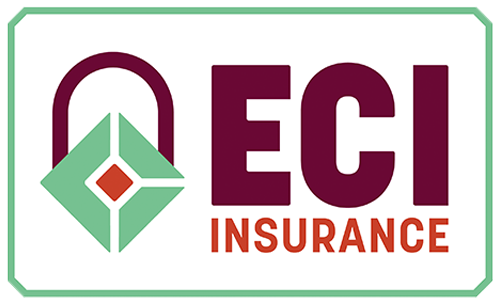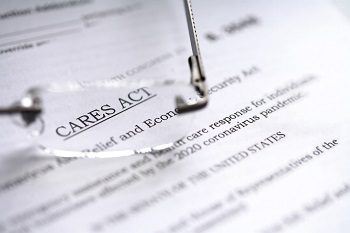2020 has not quite started off the way that we all hoped. With the economic tornado that is COVID-19 the dire straits Oklahoma small businesses have found themselves in is more challenging than ever. While this downturn is temporary, small businesses need the capital now to get them to tomorrow. This applies to Oklahoma small businesses and others across the United States.
Congress passed the Coronavirus Aid, Relief, and Economic Security (CARES) Act into law on March 27, 2020. This sets aside $2 trillion to help create some relief for Americans and small businesses.
There are many layers of this plan. So, let’s dive into each part.
Paycheck Protection Plan (PPP)
The program is for any small business with less than 500 employees, including sole proprietorship, independent contractors, self-employed persons, private non-profit organizations or 501(c)(19) veterans organizations. Its purpose is to help small business maintain their employees despite the times. This is by far the most popular loan that Americans are seeking, due to the high amount likely to receive and likelihood that there will no obligation to pay it back.
The amount of the loan received can be up to two months of your average payroll costs each month from the prior year PLUS an additional 25% of that amount. There is a $10 million cap for a business and a cap at $100,000 for each employee. This means if your average monthly payroll is $100,000 your PPP loan could potentially be up to $250,000.
There is confusion around how to calculate average monthly payroll, but not a lot of instruction on how to do so properly. The American Institute of CPAs suggests utilizing the gross payroll approach. Make sure to include all federal taxes paid. 1099 employees originally were instructed to be counted in that monthly payroll amount, but new guidance from the SBA that came out April 4th states that 1099 employees can apply for their own PPP loan and their payroll is not to be used in your calculations. For situations that are fairly simple, utilize your 2019 IRS 940 and 941 forms. Divide those numbers by 12 and use that as your borrowing base.
The money received from the PPP loan can be used for payroll costs including benefits and interest on mortgage contracts that were in play prior to February 15, 2020.
It’s important to understand what is defined as payroll. The Treasury Department defines payroll costs as:
- Salary, wages, commissions or tips
- Employee benefits, including costs for vacation, parental, family, medical or sick leave; allowance for separation or dismissal; payments required for the provisions of group health care benefits including insurance premiums; and payment of any retirement benefit
- State and local taxes assessed on compensation
- For a sole proprietor or independent contractor: wages, commissions, income or net earnings from self-employment, capped at $100,000 on an annualized basis for each employee
The amount you receive in the PPP will be forgiven as long as:
- You use the money only for the above-allowed expenses and use 75% of the loan amount for payroll costs
- You maintain your full-time employee headcount until June 30
- You do not decrease wages or salaries more than 25% for any employee that made less than $100,000 annualized in 2019
Small businesses are given until June 30, 2020 to return to full time employment and salary compensation due to any changes made between February 15-April 26, 2020. The exact amount of the loan that will be forgiven is unclear across the board. Several government organizations have put out FAQs that make the forgiveness criteria different depending on which you read. What is clear is that loans have a 1% interest rate and payments are deferred for 6 months without interest accruing during that time. They are to be repaid in 2 years.
If you’ve talked to any banks you know that SBA-approved lenders are at multiple varying degrees when it comes to being prepared for the high demand and volume when processing these applications. Already, Wells Fargo and BBVA Compass announced as of April 6 they were taking no new PPP applications.
Economic Injury Disaster Loan Emergency Advance (EIDL)
The EIDL is a small business loan that can provide up to $2 million in relief with a possible 3.75% interest rate with a 30 year term. Non-profits can receive a lower interest rate at 2.75%. The payments are deferred for 12 months. But unlike the PPP loan, interest does accrue during deferment. For loans less than $200,000, a personal guarantee is required. For loans over $25,000, collateral is required. Money can be used for any requirements of the business except for dividends and bonuses, expansion of facilities or acquisitions, or refinancing debt.
Curious who is eligible? Sole proprietors, independent contractors, co-op or tribal small business with less than 500 employees are all eligible to apply. You can submit directly on the SBA website. There not a way to track the progress of your application.
The tidbit most businesses are interested in is the one time loan advance of up to $10,000 that will not have to be repaid. This $10,000 grant is promised within three days of the approval of the application.
How To Use PPP And The EIDL
According to experts, you can apply and use both programs as long as funds are used for different purposes. While the EIDL loan must be paid back if amount is over $10,000, the funds can be used for less restrictive purposes compared with the PPP. There is a small overlap between the two in that if you apply for both, the $10,000 EIDL grant will count against the amount of the PPP that can be forgiven.
If you’re looking for liquidity in your small business, it may be a good option to apply for both. The PPP can be accepted and the approval for the EIDL will come through. With the EIDL, you have 6 months in which to accept the funds if you need cash or at that time it can be declined according to various experts.
SBA Express Bridge Loans
With small businesses in trouble, they may need help quickly. Those that need help fast can apply for a bridge loan up to $25,000 that can help supplement while working on long-term financing. In order to qualify, a business must have an existing relationship with an SBA Express lender prior to March 13, 2020. Funds are expected to be received with 45 to 90 days. The maximum amount of interest is +6.5% with a maximum term of 7 years. There are heavy fees that apply as well — including an application fee, an annual service fee, an upfront guaranteed fee and higher interest. Any funds received from this will be included going towards the maximum part of any future EIDL takes.
SBA Debt Relief
The SBA will automatically pay the principal, interest and fees of current 7(a), 504 and microloans for six months. Also as mentioned in the above programs, the SBA will automatically pay the principal, interest and fees of new 7(a), 504, and microloans issued before Sept. 27, 2020. For current SBA Serviced Disaster (Home and Business) Loans, if your disaster loan was in “regular servicing” status on March 1, 2020, the SBA is providing automatic deferments through December 31, 2020.
- Interest will continue to accrue on loans.
- 1201 monthly payment notices will continue to be mailed out, which will reflect the loan is deferred and no payment is due.
- The deferment will not cancel any established Preauthorized Debit (PAD) or recurring payments on your loan.
- Borrowers preferring to continue making regular payments during the deferment period may continue remitting payments during the deferment period. SBA will apply those payments normally as if there was no deferment.
- After this automatic deferment period, borrowers will be required to resume making regular principal and interest payments. Borrowers that canceled recurring payments will need to reestablish the recurring payment.
Employee Retention Credit
Many businesses are facing tough choices when it comes to keeping employees on or being forced to downsize. If your business suffers a 50% decline in your gross receipts for any calendar quarter in 2020, you are applicable for the ERC. This tax credit is fully refundable for employers equal to 50% of qualified wages, including benefits. The Employee Retention credit applies to wages paid after March 12, 2020 and before January 1, 2021.
The maximum amount of qualified wages taken into account with respect to each employee for all calendar quarters is $10,000. So, the maximum credit for an Eligible Employer for qualified wages paid to any employee is $5,000.
Important Note: An employer may not receive the Employee Retention Credit if the employer receives a Small Business Interruption Loan under the Paycheck Protection Program (PPP).
Families First Coronavirus Relief Act (FFCRA)
There are a lot of complexities in this act so this is the simplified version. Be sure to talk it through with your CPA.
Small businesses with less than 500 employees can receive the dollar-for-dollar tax credit. This helps pay up to 80 hours of sick leave per employee. They are only applicable when employees receive paid sick leave and expanded family leave for reasons due to COVID-19 from April 1, 2020 – December 31, 2020.
Unemployment
With the updated expansion of unemployment under the CARES act, many employers are considering placing employees on furlough or letting them go with the intention to rehire. The CARES Act dramatically increases who is eligible for unemployment and provides an additional $600 a week. The eligibility is extended by up to 13 weeks and includes those who:
- Have been diagnosed with COVID-19 or have symptoms of it and are seeking a diagnosis
- Are living with someone who has been diagnosed with COVID-19
- Are providing care for someone diagnosed with COVID-19
- Are providing care for a child who can’t attend school because it is closed due to COVID-19
- Are quarantined or have been advised to self-quarantine
- Had to quit their job as a direct result of COVID-19
- Are now the primary breadwinners because their head of household died from COVID-19



